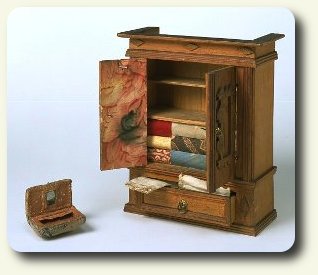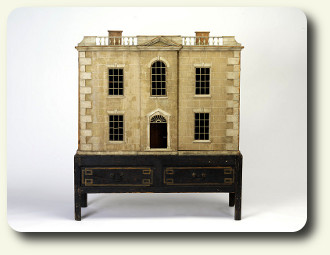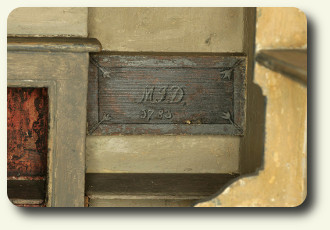


The Nuremberg House is clearly not a cabinet, and therefore must be legitimately accorded the designation
 of 'dollhouse'. It was still a plaything of the wealthy class, although not a plaything for wealthy children, and still used for domestic training. It was also a free-standing house that can be seen, and therefore believed.
of 'dollhouse'. It was still a plaything of the wealthy class, although not a plaything for wealthy children, and still used for domestic training. It was also a free-standing house that can be seen, and therefore believed.
Very few houses of the Nuremburg style have survived, yet there is no way to authenticate which is the oldest. But, wait! The Nuremberg had the date it was made written on its chimney! Once again, seeing is believing. And the winner is... The Nuremberg!
Now that the mystery has been solved, the history can continue. In the 1700's, a smaller, more realistic version began to appear. One of the more famous of these is the 1760 Tate Baby House that could be disassembled into several sections to allow the mistress of the house to take it along on her extended travels.
 Another well-known house is the Denton Welch house. Born in 1915 in Shanghai, Welch went to England to study art. A car accident left him partially disabled, changing everything. While recuperating he discovered a talent for writing,
Another well-known house is the Denton Welch house. Born in 1915 in Shanghai, Welch went to England to study art. A car accident left him partially disabled, changing everything. While recuperating he discovered a talent for writing,

but he needed more. While searching for a relief from his boredom, he happened upon an old, dilapidated dollhouse in a friend's cellar. While restoring the dollhouse he discovered the date of 1783 under a layer of paint in the kitchen fireplace.
Custom Dolls, Houses & Miniatures / CDHM







